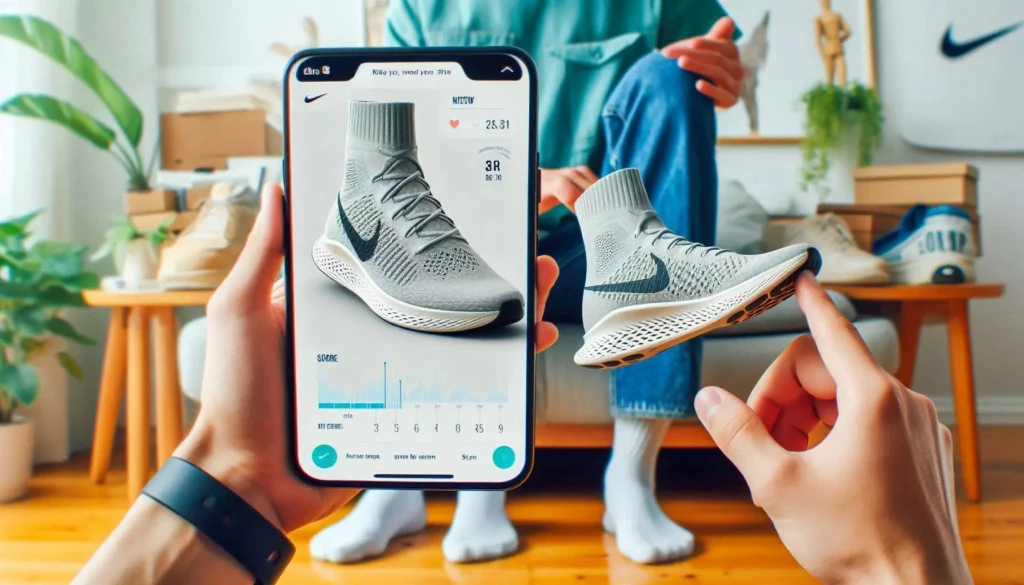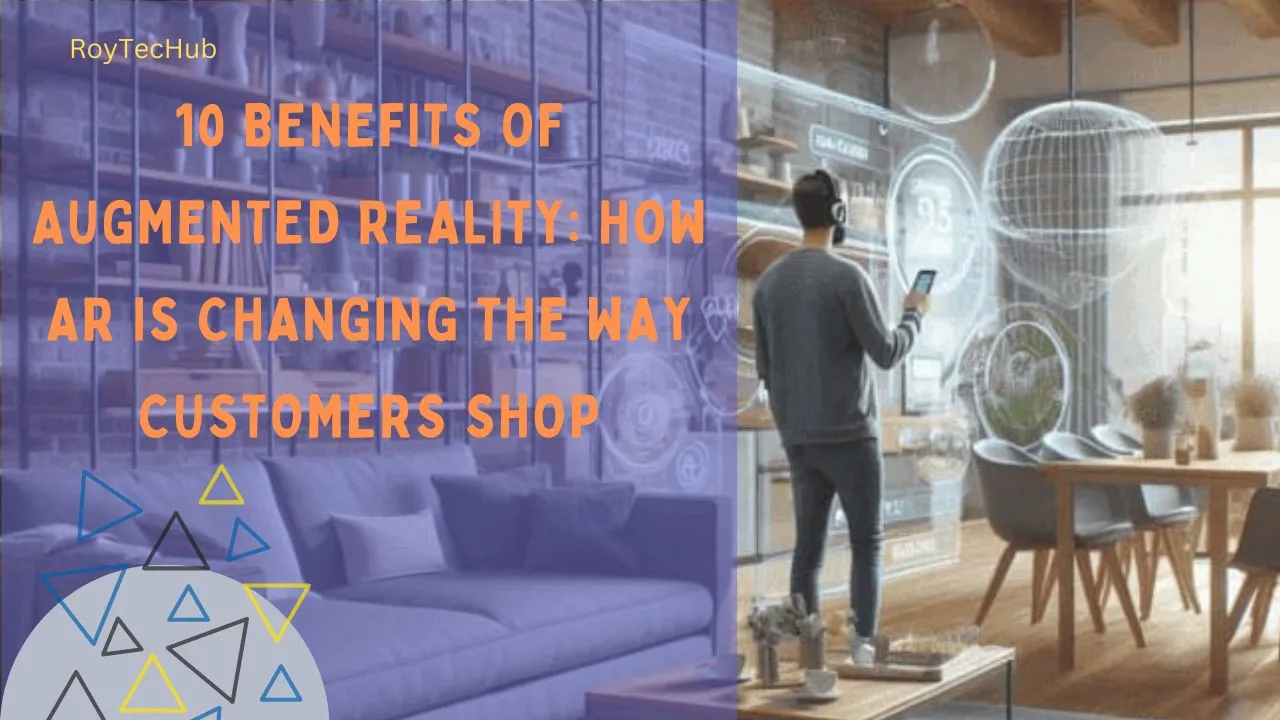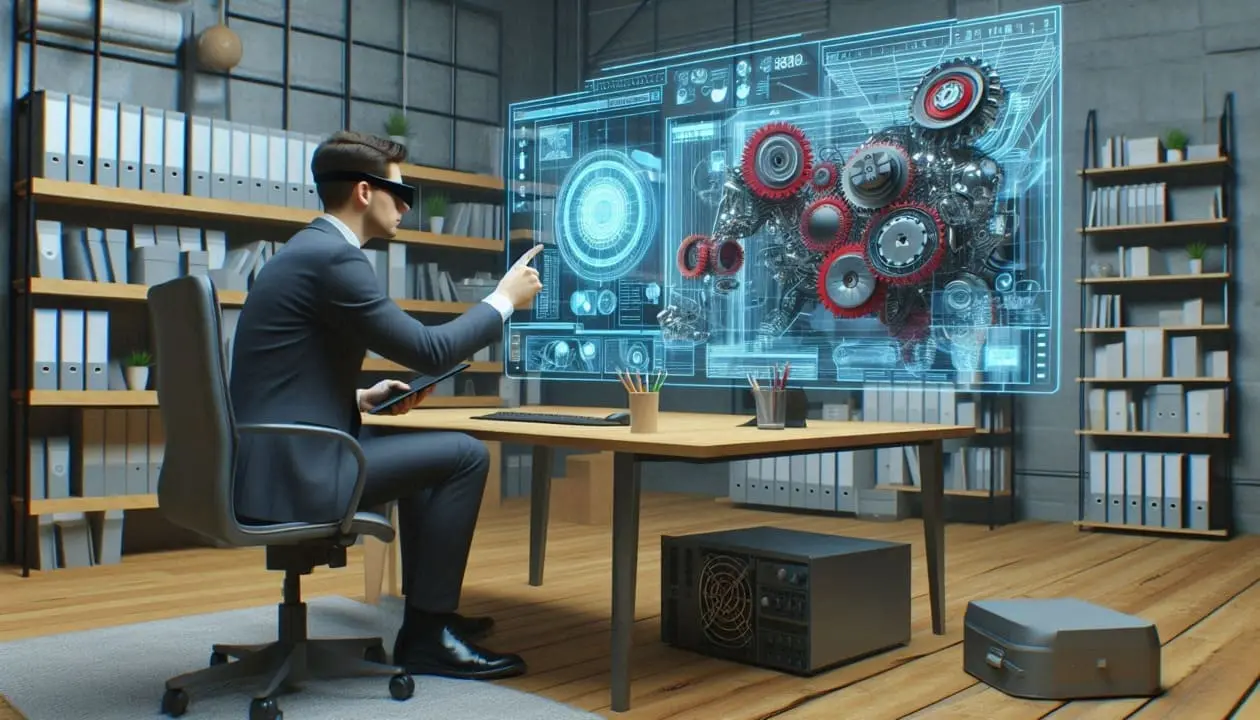Augmented Reality (AR) is proving to be one of the most powerful tools that is changing the face of the retail business by changing the way consumers and customers engage with the products and the brands.
Table of Contents
ToggleThus, Augmented Reality, being an amalgamation of reality and digital content can create an engaging, satisfying, and sale-inducing sensory shopping experience.
This article is going to discuss ten beneficial aspects of AR and how this advanced tool is changing the perspective of shopping.
10 Benefits of Augmented Reality: How AR is Changing the Way Customers Shop
Augmented Reality (AR) is also one of the modern technologies that overlaps digital information with the real environment allowing users to interact with it.
The retail industry is by far the most common industry that employs the use of augmented reality since it helps to improve the shopping experience by making it more interesting, interactive, and informative.
The use of augmented reality in shopping is revolutionizing the approaches that it takes in reaching customers, right from having a virtual trial of the products to having a trial of the products in action.
Benefit 10: Competitive Advantage and Innovation
What it is
That is why adopting AR technology can help brands to stand out from the competitors as it will demonstrate to the target audience that the brands are progressive.
How It Works
With AR, brands can open up a new market and reach tech-savvy buyers thus having an edge of industries embracing the technology.
Example
Currently, L’Oréal Makeup Genius has been rated as one of the most popular and effective applications that use augmented reality in the beauty industry.

Since it engages its consumers with a Virtual Makeup tool whereby they get to test makeup products virtually, then L’Oréal is a company that adopts technologies in its business most adequately; hence having more customers who are loyal to it.
Benefit 9: AR-Powered In-Store Experiences
What It Is
AR can improve in-store browsing by means of interactive product visualization and advertisement, avatars, and augmented store plans.
How It Works
Consumers, instead of scanning physical barcodes, utilize own mobile device or augmented reality glasses to get more information, videos, to get offers or recommendations during the shopping.

Example
Lacoste AR App enables the shoppers to try out shoes without physically putting them on when they are shopping. Customers can point their smartphone at the product and the screens can display how the shoes look like when one is wearing it an aspect that improves the shopping experience.
Benefit 8: AR-Enabled Social Media Engagement
What It Is
AR filters and effects in the social media help make the brand more popular and engaging to view since it is entertaining.
How It Works
Businesses can create their AR filters or effects that people can use on the images and videos, which forces the consumers to share the content with friends.
You may also read: How to Market art online using augmented
Example
Snapchat Lenses gives brands an opportunity to share interesting content that people will like and share, for instance Taco Bell and Nike. These custom lenses ensure that the brand is seen by people using smart glasses while at the same time keep the user interested.
Benefit 7: Reduced Return Rates
What It Is
This makes it an effective tool in reducing what is referred to as return rates since the customers gets to make a decision on what they are likely going to receive almost always.
How It Works
Since augmented reality gives the customer a real and true to life view of products, few customers will be dissatisfied hence, less returns and exchange.
Example
The Gucci Virtual Sneakers are Avatars that enable customers to virtually wear the selected models of sneakers in AR. A customer gets a physical feel and visual dimension of the shoes and this is especially good for customers who prefer such shoes for specialized occasions and events in their lives, thereby reducing instances where they order the shoes and return them.
Benefit 6: Increased Sales and Conversion Rates
What It Is
AR can contribute to developing sales and high conversion rates because foreseeing the results of a purchase and cutting the risks of buying things online can be beneficial for customers.
How It Works
The prospect of seeing products in their context or as worn by customers ensures that more people are motivated to make the purchase. AR helps create confidence and removes the anxiety that is linked to purchasing goods through the Internet.
Example
Currently, Warby Parker takes advantage of augmented reality and applies it in the virtual try-ons of glass frames. This aspect gives the customers a wider chance of selecting the right frames, thus boosting conversion.
Benefit 5: Improved Customer Engagement
What It Is
AR brings out the feel that customers are entertained as they shop since there is a lot of their attention being captured as they shop.
How It Works
Some of the value addition a brand can implement by integrating AR to the shopping process includes appealing features like the click/interact ads, games, and product selling demonstrations that are likely to capture the customers’ attention.
Example
The ad for Pepsi Max Bus Shelter was a successful AR experience in London that converted a bus shelter and surprised people with virtual tigers, UFO and others. This campaign had a good following and people deprecated their products a lot.
Benefit 4: Personalized Shopping Experiences
What It Is
AR can enhance the shopping experience to an individual level as interactions and recommendations are highly unique and orientated to the client’s behavior.
How It Works
Customer relations may also be followed by means of AR apps, and the information gathered can be employed to introduce exclusive product recommendations and special offers to the consumers, which would only add to the appealing shopping experience.
You may also read: The Complete Guide to Augmented Reality(AR) for E-commerce: Transforming Shopping Experiences
Example
Nike Fit incorporates augmented reality to capture sizes of customer’s feet and recommend the right shoe sizes to the company’s different models. This results into a more appropriate size and improves the shopping experience of the buyers.
Benefit 3: Interactive User Manuals
What It Is
Augmented reality enhanced manuals create better experiences for customers; it offers them a precise guide on how to use or even disassemble a certain product.
How It Works
Soon consumers point their smartphone at a product or its packaging and the AR app superimposes instructions, animations and tips on the product.
Example
BMW i Visualizer contains instructional schematics for BMW automobiles. With the help of AR layers customers can briefly hover their car and get all the information about it starting with the controls and ending with decorations.
Benefit 2: Virtual Try-Ons
What It Is
Virtual try-ons involve the use of AR enabling the customers to see how the products like clothing, accessories, and makeup will look like on them without having to purchase them.
How It Works
Through the built-in camera of a smartphone, it allows customers to place ‘virtual’ products on a ‘real-life’ image of the customer in real-time. It enables consumers to make proper purchase decisions since they interact with the alternatives and brands directly.
Example
Sephora Virtual Artist is a mobile application that enables customers to ‘‘wear’’ makeup products without physically applying them to their faces. Lipstick, eyeshadow, and other products can be applied virtually and thanks to it customers can try various shades to select the most appropriate one without visiting a store.
Benefit 1: Enhanced Product Visualization
What It Is
Superior visualization means customers get an idea of a product’s detailed, life-like image imposed on their own space. This feature can be of great help with things like furniture, home decoration, and giant appliances.
How It Works
A customer can take out their smartphone or tablet and using a camera, place an actual model of the product in the chosen room. This makes them have a feel on how the product will look like and where it will be appropriately placed at home.
Example
An example that pertains to this phase is IKEA Place. IKEA has made an application that enables customers to see how furniture from the company will look like in their compound virtually before they order for the products.
Conclusion
Augmented reality stands as one of the biggest growth fronts of the retail market through conscious and innovative experiences that are offered to customers.
From getting a better understanding of the product and its usability to virtual fittings and virtual shopping, AR has many advantages that contribute to the higher levels of engagement, sales, and satisfaction among the customers.
With the use of AR technology in brands, they are able to outcompete rivals in the market whilst attracting clients with technological inclinations hence encouraging them to make repeat purchase.
As we move forward it is quite obvious that the AR technology brings in the capability to alter the retail landscape significantly and holds the promise for more and better approaches for brands to interact with the customers.
It is about time you integrated the use of AR in retails and see how this particular technology will revolutionize the manner in which your clients shop, consequently enhancing your brand’s potential at the same time.








